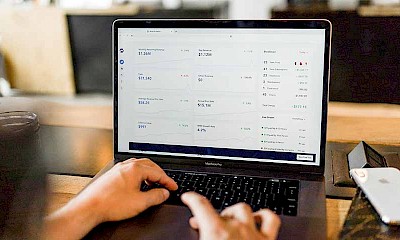Cost per acquisition (CPA)
CPA (cost per acquisition) is an important key figure in the field of online marketing and advertising. It measures the costs incurred by a company to acquire a customer or to achieve a certain action (such as a purchase, login, registration or download) by a user. CPA is particularly relevant for companies running digital advertising campaigns, as it helps them to understand and optimize the financial cost of customer acquisition.
What is CPA - the basics
The CPA is calculated by dividing the total costs of an advertising campaign by the number of acquisitions (customer acquisitions or desired actions). This key figure enables marketers to evaluate and compare the success of different advertising measures by relating the efficiency of the resources used directly to the results achieved. A low CPA indicates that the cost of acquiring a customer or achieving a desired action is relatively low, which is generally considered a sign of an efficient campaign.
Formula for calculating the CPA: Costs / Conversions = CPA
An example: The budget of a campaign was 10,000 euros. 200 forms were filled out. Each action therefore cost 50 euros - the CPA.
Examples of conversions (actions)
Depending on the type of business and objectives, different actions may be important for you. Here are some of the most common conversions in terms of CPA:
- Online purchase: A customer completes a purchase transaction on an e-commerce website. Subscribing to a newsletter: A user subscribes to a company's newsletter to receive regular updates.
- Software download: A visitor downloads software or an app from a website.
- Contact form completion: A prospective customer fills out a contact form on a website to obtain further information or make an inquiry.
- Registration for a webinar or an online event: A participant registers for an online event or a webinar.
Why is the CPA important?
The CPA is of central importance for companies and marketers for several reasons:
- Budget optimization: By understanding and monitoring the CPA of their campaigns, companies can allocate their budgets more efficiently and make adjustments where necessary to reduce costs and maximize ROI (return on investment).
- Performance comparison: CPA makes it possible to directly compare the performance of different advertising channels (e.g. search engine advertising, social media, affiliate marketing), which is helpful when making decisions for future campaign strategies.
- Target orientation: By setting CPA targets, companies can define concrete performance targets based on realistic budget considerations and profit expectations. This helps to manage marketing activities in a targeted manner.
CPA management
To effectively manage and optimize CPA, companies and marketers use various strategies:
Bidding strategy target CPA in Google Ads
The Target CPA (Cost per Acquisition) bidding strategy in Google Ads is an advanced approach that aims to help advertisers optimize their customer acquisition costs. By defining a smart bidding strategy with target CPA, the advertiser tells Google Ads how much it is worth on average to acquire a customer or perform a certain action. Based on this information, Google Ads uses machine learning and algorithms to automatically adjust the bids for each ad auction so that the specified target CPA is met as far as possible. This allows advertisers to make their advertising spend more efficient as Google Ads is designed to maximize the number of conversions or conversion value (revenue) at the set cost point. The strategy takes into account various factors such as the search behaviour and device usage of potential customers in order to optimize bids according to the highest probability of conversion. This allows advertisers to achieve their advertising goals while maintaining control over their spend.
Conclusion
CPA is an essential metric for evaluating the efficiency and effectiveness of online marketing campaigns. By understanding and continuously optimizing CPA, companies can refine their marketing strategies, reduce costs and ultimately maximize their financial success. Proactive CPA management, which includes the continuous analysis, adjustment and optimization of campaigns, is therefore essential for success in digital marketing.








